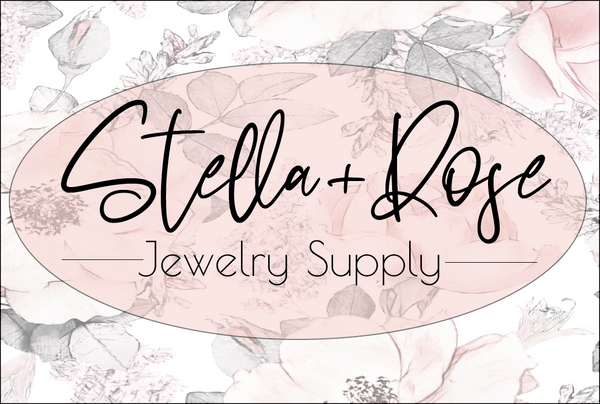Hello everybody. We wanted to write an article on the jewelry regulations for your business owners out their. If you're selling, making, or even importing jewelry in the United States, there's more to consider than just design and pricing. Jewelry is heavily regulated, and staying compliant isn’t just good business practice it’s the law. This guide will walk you through key jewelry laws and regulations in the U.S., so you can stay out of legal trouble and focus on growing your brand.
1. Why Are Jewelry Regulations Important?
Jewelry laws are mainly in place to protect consumers. Whether it's avoiding harmful materials like lead or preventing misleading advertising, U.S. regulations aim to make sure people know exactly what they’re buying. If you're selling jewelry, especially to children or claiming something is “real gold” or “sterling silver,” you better back it up with facts.
2. Key Regulatory Bodies for Jewelry
Here’s a quick look at who’s regulating what:
-
CPSC (Consumer Product Safety Commission): Oversees jewelry safety, especially for children.
-
FTC (Federal Trade Commission): Handles labeling and marketing claims (like karat gold, diamonds, and plating).
-
CBP (U.S. Customs and Border Protection): Manages import/export regulations.
-
EPA (Environmental Protection Agency): Involved if manufacturing impacts the environment.
-
State laws: Vary by region, especially for resale and estate jewelry.
3. Children’s Jewelry: Strict Rules Apply
Children’s jewelry is under intense scrutiny by the CPSC due to potential lead and cadmium exposure. Here's what you need to know:
-
Jewelry marketed for kids under 12 must comply with the Consumer Product Safety Improvement Act (CPSIA).
-
Lead content must not exceed 100 parts per million.
-
Cadmium is also restricted in surface coatings and accessible parts.
-
Third-party lab testing is usually required.
-
Sellers must provide a Children’s Product Certificate (CPC).
Source: CPSC Jewelry FAQ
4. FTC Guidelines: What You Can (and Can’t) Say
The Federal Trade Commission (FTC) has a lot to say about how you describe your jewelry. If you claim a product is “gold,” it better be gold—and not just gold plated.
Here are a few rules to follow:
-
You can only call something “gold” if it's at least 10 karats.
-
“Vermeil” must be sterling silver coated with gold that’s at least 2.5 microns thick.
-
Diamond simulants (like cubic zirconia) must be clearly labeled as such.
-
“Handmade” claims must mean that it’s actually made by hand, not just assembled.
The FTC also removed terms like “natural” and “synthetic” from official guidelines, giving brands more flexibility, but also more risk of being vague or misleading.
Source: FTC Jewelry Guidelines and Thollot & Co. FTC Changes
5. Labeling & Stamping Requirements
Jewelry labels can’t just sound nice, they have to be accurate.
If you’re stamping a metal type or karat weight, here’s what’s required under 16 CFR Part 23:
-
You must include your registered trademark or the manufacturer’s name.
-
Gold content must be expressed in karats (e.g., 14K).
-
“Sterling silver” means the piece must contain at least 92.5% silver.
-
If the item is gold-filled or plated, that has to be disclosed too.
Failure to properly label your jewelry could be considered deceptive under federal law.
Source: eCFR - Part 23
6. Import and Export Regulations
Importing jewelry from overseas or selling internationally? You’ll need to follow U.S. Customs and Border Protection (CBP) rules.
When bringing jewelry into the U.S.:
-
You must declare materials and country of origin.
-
You may need Harmonized Tariff Schedule (HTS) codes.
-
All imported jewelry is subject to inspection.
Exporting jewelry may also require additional permits depending on destination countries, especially if using rare gems or precious metals.
Source: CBP Jewelry Import Guide
7. Estate Jewelry: Resale Isn’t Risk-Free
Selling estate or vintage jewelry? You’re still subject to U.S. laws.
-
You must disclose known treatments (like fracture-filling in diamonds).
-
It's illegal to misrepresent modern replicas as antiques.
-
If you’re buying estate jewelry from individuals, some states require you to be a licensed secondhand dealer.
-
Sales taxes may apply, and proper documentation is essential.
Source: LegalReader Estate Jewelry Guide
8. The Jewelers of America Code of Ethics
If you want to go beyond the minimum legal requirements, you can follow the Jewelers of America (JA) Code of Professional Practices. It’s not legally binding, but it does add a level of trust and professionalism for your customers.
The code emphasizes:
-
Honest advertising
-
Transparency in sourcing
-
Accurate product descriptions
-
Conflict-free gemstone sourcing
Source: Jewelers of America Code
9. Selling Online? You’re Still Responsible
Just because you're selling on Etsy or Shopify doesn’t mean you’re off the hook. Online sellers must follow all the same laws as brick-and-mortar businesses. That includes:
-
Accurate product listings
-
Proper labeling
-
Compliance with children’s jewelry laws
-
Providing documentation for claims like “natural stone” or “recycled metal”
10. Helpful Resources & Legal Forms
Need to cover your legal bases?
These are great starting points for contracts, waivers, and manufacturing compliance checklists.
Final Thoughts
Navigating U.S. jewelry laws and regulations might seem overwhelming at first, but once you understand the basics, it becomes second nature. Think of it like this: being compliant isn’t just a legal checkbox it’s a selling point. Customers usually trust brands that follow by the rules. So whether you're launching a handmade Etsy store or managing a national retail chain, knowing the law helps you protect your business and your buyers.
